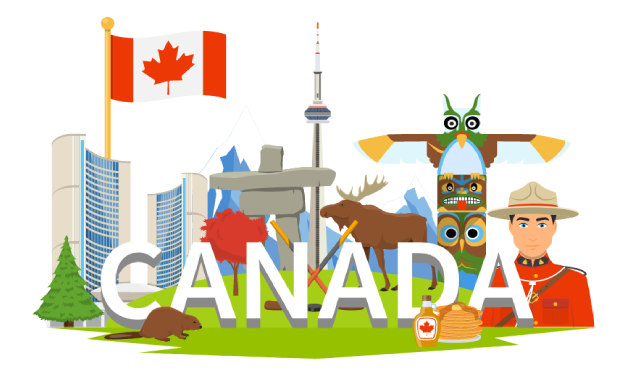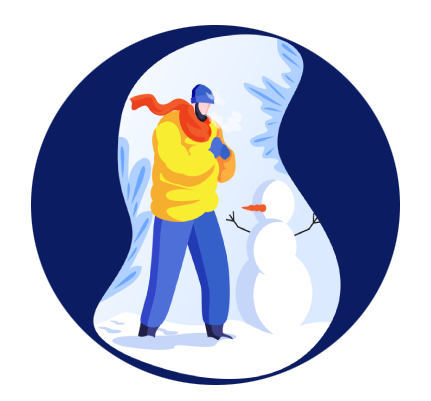Different Australian Visa SOP’s – A Complete Guide
Get Sop For Australia Visa – A Complete Guide Visas can be of different types. Right? If you are planning to go to Australia, you
The world consists of more than 200 countries.
Each of those countries has unique topography, culture and other unique aspects.
One of the largest among them is Canada.
Consulting a professional SOP writer can reduce rejection risks.
If you are a student or skilled worker thinking about moving to Canada for higher education or work, here are some interesting facts about Canada to know before you pack your bag.
Check out 1000+ Free SOP Samples.


A Quick Overview of Canada
Being one of the most demanded countries in the world, Canada is sought by both international students and professionals.
Here is a quick overview of Canada that can help you enhance your basic idea on Canada.
Canada is a country located in North America.
It stretches from the Atlantic Ocean in the east to the Pacific Ocean in the west and the arctic ocean in the north.
The country shares a border with the US in two different places; Alaska (USA) in the west, and 12 US states of the contiguous United States in the south.
This binational border is the longest in the world – 8,891 km or 5,525 mi.
In addition to that, Canada has the longest coastline in the world – 202,080 kilometres.
It also shares maritime borders with France’s Saint Pierre and Miquelon Island and Denmark’s autonomous territory ‘Greenland.’
Canada is the second largest country in the world with a surface area of 3,855,100 sq. mi or 9,984,670 km2.
If we consider the land area alone, Canada ranks fourth with 9,093,507 km2 (3,511,023 sq. mi) or 6.1% of the world’s landmass.
Russia, China and the United States are the countries ranking above Canada in this regard.
As per the latest surveys held in the fourth quarter of 2022, Canada has a population of 39,292,355, which is 37th in the global population ranking by countries.
There has been an increase of over 5 per cent since 2016.
Immigration is the major contributor to population growth in Canada as compared to natural growth.
Canada received 405, 000 immigrants in the year 2021, which is an all-time record.
The Canadian flag is featured with a vertical triband with red on the right and the left and white at the centre.
The white part of the flag features a red maple leaf at its centre.
The tricolour band is set in the ratio of 1:2:1 and the flag’s proportion is 1:2. The Canadian flag, also known unofficially as the Maple Leaf, symbolizes the country’s pride and strength as a nation throughout its history.
Canada has adopted a number of symbols over the last few years.
The Beaver is the symbol chosen to represent the sovereignty of Canada.
Other official symbols include:
Ottawa, which is located in the south of Ontario province, is the capital of Canada. With a metropolitan population of 1,488,307 and a city population of 1,017,449, it is the fourth-largest metropolitan area and city in Canada.

Canada - Official Languages
As a former French and British colony, Canada has got both English and French as their official languages. But do Canadians only speak English and French?
Read below to understand the present language status in Canada.
English and French are the most spoken languages in Canada.
They are also the co-official languages of the state of Canada.
French can be considered as the Canada second language in terms of the number of speakers and the popularity in use.
In addition to these two, a number of languages are spoken in Canada.
For instance, Arabic, Hindi, Urdu, Spanish and many more.
Canada can neither be called French nor English. While about 56 percent of Canadian citizens claim English as their mother tongue, about 22 percent of them claim French.
Yes, about half of the people of Canada can speak French including 22 percent of the population who have French as their mother tongue.
As you have noticed, there are people who have both English and French as their mother tongues.
To make the administration easier and equal for these people, the government has introduced the co-official language policy.
It is estimated that about 13 to 15 percent of the people in Canada speak languages other than French and English at home (as their mother tongue).
Take a look at the table below to find out more.
In addition to these, a significant number of the population speak any of the Indian languages like Hindi, Gujarati, Marathi, Tamil, Malayalam, Kannada or the like.

Climate Condition in Canada
Being an Arctic country, Canada has got an extreme level of climate.
But is Canada fully arctic?
Does Canada have uniform climatic conditions?
Here are your answers to all your daunting questions.
Canada has an extremely cold winter and hot summer.
Most of the interior parts of the country experience continental climates.
The average temperature during the winter is -15 °C.
However, this can go down to as much as -40 °C on some days in certain areas. Grounds are covered in snow for up to six months of the year.
Canada experiences all four different seasons – spring, summer, fall and winter. However, note that due to its diverse geography, the climate in each region of the country is different and the seasons can be felt quite differently.
Between five to six months can be cold in Canada.
This includes the winter time and a couple of months around it. For instance, from November to April.
Canada experiences the hottest climate in July when the average temperature is 22 °C.
The number one coldest major city in Canada is Winnipeg.
The average low temperature of the city during the winter is -19.2°.
The temperature dips below -30° for at least 12 days during this period.
Victoria, which is located in the province of British Columbia, has the warmest and best weather conditions in Canada.
Summer doesn’t get too hot and winter doesn’t get too cold here.

Canadian Provinces - An Overview
As the second largest country in the world, Canada has got numerous provinces and territories.
Here is an overview of the numerous provinces in Canada.

Canadian Cities - An Overview
Being one of the most sought country in the world, Canada has got a beautiful city life.
This chapter will help you gain an overall idea about the top cities in Canada.
Canada has many cities. However, as someone thinking about moving to Canada, you may consider a city as the best on so many different criteria.
While some like to stay in the most affordable Canadian cities, some would rather move to the most beautiful cities.
Here is a list of the top ten Canadian cities.
It is hard to define which is the most beautiful city in Canada because each city has certain unique aspects that others don’t.
However, on many parameters, Vancouver ranks at the top.
According to the world happiness index, Vancouver was rated 7.3 or 12th place in the world ranking.
Life in Vancouver is coveted by everyone.
People are happy.
The city is blessed with many beautiful mountains and landscapes.
The population of Vancouver is extremely multicultural.
It seems like the world has been replicated here.
Though Canada is a huge country, people are mostly concentrated in the south. The rest of the country is sparsely populated.
Here is a list of ten smallest cities in Canada and their population.
Name of the city
Province
Number of Residents
When it comes to employment opportunities, Toronto ranks high.
It is the biggest and most populated city in Canada with thousands of businesses and industries.
Other cities that come close to it are Vancouver, Montreal, Calgary, Halifax and Ottawa.
We Provide SOP Services All Over the Globe

Canadian Economy
As a well developed country, Canada is one of the top economies in the world. Reading this section will enable you to have an idea about the economic status of Canada.
Yes, Canada is a well-developed country.
It has the world’s ninth-largest economy.
The top industries that contribute to Canada’s revenue are mining, manufacturing and real estate.
As per the most recent statistics, Canada’s GDP is USD 2.240 trillion.
As per the most recent reports, Canada’s per capita income is USD 57,827 which is 25th in the global ranking.

What is the Canadian Literacy Rate?
Being a pioneer in technological advancements, Canada is one of those countries which has got a high literacy rate.
Canada has a high literacy rate. As per the data compiled on literacy rate by country in 2022, Canada’s literacy rate stood at 99.00%.
Canada is among the top 50 countries that have the highest literacy rate in the world. In that list, it’s ranked 41st.

Canada's Unemployment Rate
As one of the important parameters of the quality of life, the unemployment rate of a country is a good reflection of the economic status of a nation.
The unemployment rate in Canada stood at 5.2 per cent in 2022.
No. According to statistics, the unemployment rate in Canada has fallen slightly from the previous years – 2021 and 2020 and is 5.2 per cent now.
It is not a high rate compared to many other developed nations.
The province of Newfoundland and Labrador experienced the highest unemployment rate in Canada as per the reports published in 2021.
Here is a table showing the unemployment rate in Canada by province.
The pay for different job roles varies from region to region.
Jobs like service station attendant, fast food preparer and cashier come under the lowest-paid categories.
In provinces like New Brunswick, these jobs will fetch approximately $12 an hour while in the greater Toronto region, these roles can get you paid somewhere around $14 to $15 an hour.
The minimum wage differs among Canadian provinces and territories. The General minimum wage is $15.5 an hour.

Canada - Healthcare System
As a country ranked 3rd in the quality of life ranking , Canada has got a great health care system in the world.
Have a glance below to understand the standard of the Canadian Healthcare system.
The Canadian healthcare system is publicly funded.
It means Canadians are taxed a certain amount of their earnings towards healthcare coverage.
Yes. Canada provides free healthcare to its citizens and permanent residents.
They can apply for public health insurance coverage.
Canada offers an excellent national health insurance program.
The best part of the program is that it is easy to access.
Both Canadian citizens and permanent residents can avail of a single-payer universal healthcare system.

Education System in Canada?
Being the most sought country by international students, Canada is ranked top in various global educational rankings.
Reading the below section will help you understand the quality of the educational system in Canada.
Canada is known for its high-quality education system.
There are two types of education systems in Canada – private and public.
The government spends about 6 percent of its GDP on education and subsidizes it to the citizens.
Canada has an impeccable publicly funded education system.
The schools, colleges and universities of each province are managed respectively by the department of education of those provinces.
Hence, you will find certain aspects of it vary from province to province. Nevertheless, the federal government keeps a close watch on it in each province so that the quality and standards remain consistent throughout the country.
Public education up to grade 12 is free in Canada for permanent residents and Canadian citizens.
International students are required to pay the tuition fee as well as expenses on other provisions such as college tours, uniforms, travel expenses etc.
International students can go to Canada and study at any college or university they choose.
Admissions are finalized on a merit basis.
There are both public and private universities where international students can enrol to.
The tuition fee in private institutes is relatively higher than that in public institutes.
The average tuition fee for an international student in a public university in Canada would come to around CAD 8,000 to 23,000 annually.
Most universities have scholarship programs which allow students to manage a significant amount of the tuition fee and other expenses.
The top ten courses that international students choose to study in Canada are:
Generally speaking, there are two intakes in a year for Canadian institutes – Spring Intake and Fall intake.
Besides these, some universities offer a winter intake too.
The fall intake is the best of all. Obviously, admission is tough for this.
Intake
Winter
Time
January to April
Benefits and drawbacks
This is the least common intake offered only by certain universities. This intake mostly helps students who missed their chances in the fall intake. Admission is less competitive for this take since very few opt for it.
Spring
May to August
Spring intake is less preferred as compared to fall intake since most people use this period for vacation or work.
Fall
September to December
This is the most popular intake in Canada which happens across all universities and colleges. There is high competition for this intake since most students choose this.

How to Get into Canada?
As a popular destination of immigrants, Canada is preferred by any one who longs for a quality of life.
Here we list details on how to get into Canada.
There are multiple options to get into Canada.
You can go there as a student on a student visa or a skilled worker with a Canadian work permit and work visa and as a visitor or dependant on dependant/spouse visas.
Express Entry is the easiest immigration program in Canada.
It allows eligible candidates to go to Canada in less than six months.
Canada is one of the countries with the greatest number of islands.
It has 52,455 islands.
The five major islands of Canada, however, are:
Canada is a land of diversity.
You will find quite different cultures and cuisines in each of its provinces.
The most popular food and drinks of Canada are:
Canada has several popular heritage sites which are part of UNESCO’s World Heritage Sites List.
They are:
Conclusion
That brings us to the end of this blog.
We hope to have given you a complete picture about Canada now.
Are you even more thrilled to apply for higher studies in Canada now?
Do you think there is anything else we can add to this blog in this context?
Feel free to share your valuable feedback and suggestions with us in the comments below.
Get Sop For Australia Visa – A Complete Guide Visas can be of different types. Right? If you are planning to go to Australia, you
Writing SOP for Australia University- A Complete Guide Looking for a complete guide to write SOP for Australia? You are at the right place. Are
How to Write an SOP for Student Visa Extension Australia – A Complete Guide Are you looking to extend your Australia student visa? Do you
An Essential Guide to SOP for Information Technology Australia Having all the facts in one place can make it simple to comprehend SOP for Information
SOP for Project Management in Australia – An Out and Out Guide Are you worried about writing an SOP for project management in Australia? Are
Statement of Purpose for Hotel Management in Australia – The Ultimate Guide Does writing an Statement of Purpose for Hotel Management in Australia appear challenging

© Copyright 2025 SOP Consultants | Designed by 3CBrandHub

© Copyright 2024 SOP Consultants | Designed by 3CBrandHub